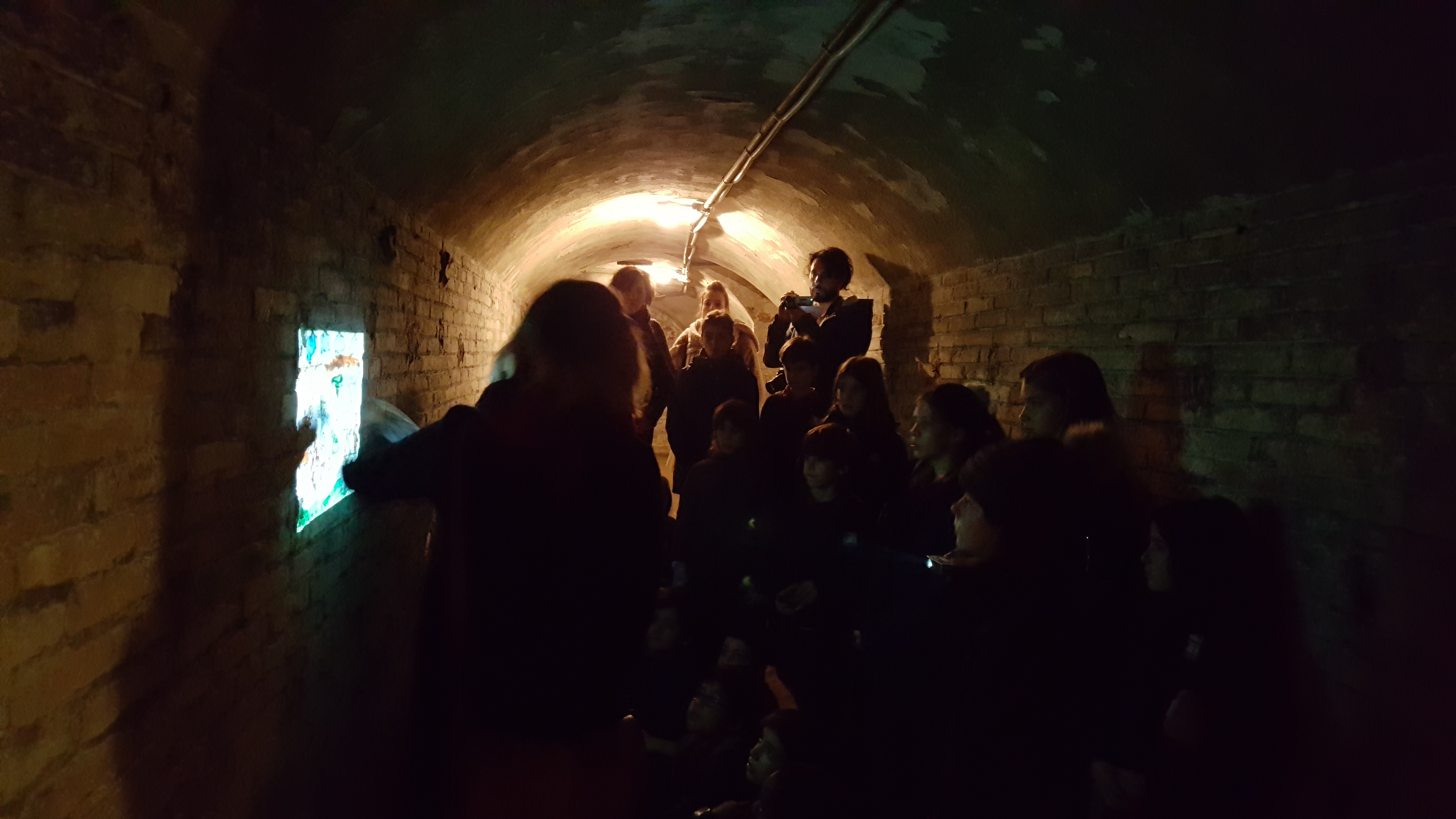Refugi 307 – An Educational Virtual Heritage Experience
Refugi 307 – An Educational Virtual Heritage Experience

What is the project about?
In collaboration with the Barcelona History Museum, we designed an educational experience for the Refugi 307. The cultural heritage site is one of the bomb shelters that were built during the Spanish Civil War in Barcelona to protect the population. The shelter is today part of the History Museum of Barcelona which provides guided visits for schools and the general public. The goal of the educational Virtual Heritage experience is to complement the traditional guided visit by enabling (1) children to critically reflect upon historical events during the Spanish Civil War and (2) facilitating the cognitive development of their perspective-taking skills to better understand the living conditions in one of the bombing shelters in Barcelona.
Which goals does it have within this research?
We explored different co-design techniques that focused on children's presence in a site-specific location and their sensations related to the notion of situatedness such as the Dwelling Space and Reflective Drawing Technique. We also used this context to explore the potential of the World-as Support Interaction paradigm for archeological sites.
More details about the project can be found on our research group website.
Related Publications:
Marie-Monique Schaper, Ole Sejer Iversen, Laura Malinverni, Narcis Pares. (2019). FUBImethod: Strategies to engage Children in the co-desingn for Full-Body interactive experiences. International Journal of Human-Computer Studies, 132: 52-69. DOI= http://doi.org/10.1016/j.ijhcs.2019.07.008
Marie-Monique Schaper, Maria Santos, and Narcis Pares. (2018). Orchestrating experts’ assumptions and children’s values in the design of Virtual Heritage experiences. International Journal of Child-Computer Interaction. DOI=https://doi.org/10.1016/j.ijcci.2018.02.001
Marie-Monique Schaper, Maria Santos, Laura Malinverni, Juan Zerbini Berro and Narcis Pares. (2018). Learning about the past through situatedness, embodied exploration and digital augmentation of cultural heritage sites. International Journal of Human-Computer Studies. DOI=http://dx.doi.org/10.1016/j.ijhcs.2018.01.003
Marie-Monique Schaper, Maria Santos, Laura Malinverni and Narcis Pares. (2017). Co-Designing Virtual Heritage Experiences for Archaeological Sites based on the novel AR Paradigm World-as-Support
ACM Celebration of Women in Computing, WomENCourage Conference 2017. See conference abstract
Maria Santos, Marie-Monique Schaper, and Narcis Pares. 2017. Moving through the past: design and evaluation of a full-body interaction learning environment for a public space. In Proceedings of the XVIII International Conference on Human Computer Interaction (Interacción '17). ACM, New York, NY, USA, Article 54, 3 pages. DOI= https://doi.org/10.1145/3123818.3133833
Marie-Monique Schaper, Maria Santos, Laura Malinverni and Narcis Pares. (2017). Towards the Design of a Virtual Heritage Experience based on the World-as-Support Interaction Paradigm. In Proceedings of the 2017 CHI Conference Extended Abstracts on Human Factors in Computing Systems (CHI EA '17). DOI=http://dx.doi.org/10.1145/3027063.3053089
